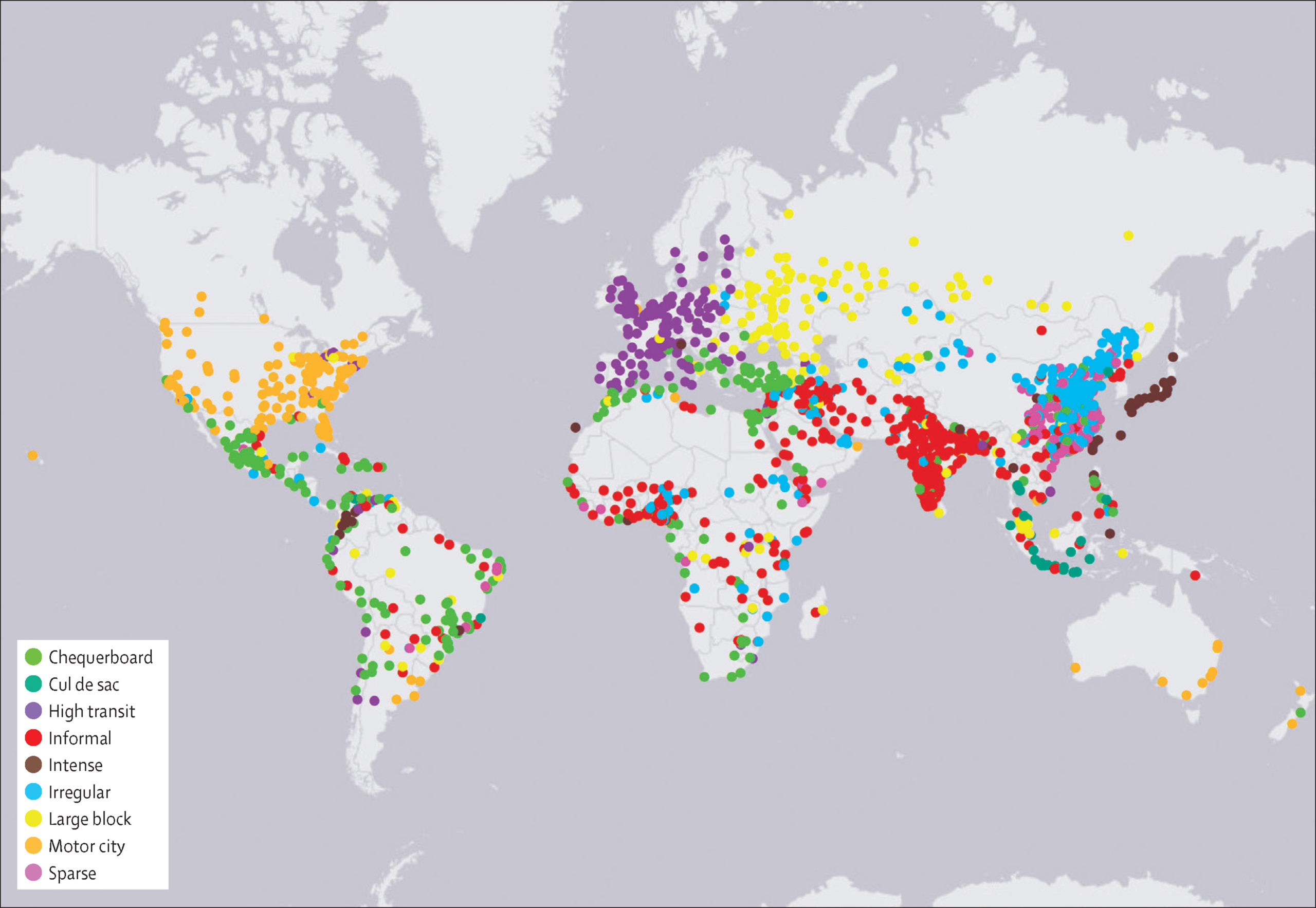From Mirage News (Australia), January 28, 2020. Hat tip to “The Overhead Wire”
“City design that combines more public transport and rail networks with smaller, low speed blocks were the best to reduce road transport injuries, according to a new study, A global analysis of urban design types and road transport injury: an image processing study.
“Published in The Lancet Planetary Health, the research identified the best and worst performing city designs with respect to road injuries.
“Researchers from Australia, Spain, and the United States compared maps of almost 1700 cities across the world with injury data to understand urban design factors that contribute to the most road injuries.
“Cities were categorized into nine unique design types ranging from locations with highly organized road and rail network (‘High Transit’, ‘Motor City,’ and ‘Intense’) to areas with almost no public transport and sparse urban design.

“Lead researcher Dr. Jason Thompson said the research aims to highlight the importance of urban design and planning as a key factor in reducing transport related injuries across the world.
“The study found ‘High Transit’ cities with strong rail networks like Barcelona, Durban, Jerusalem, and Toronto had the lowest rates of road injuries compared to ‘Informal’ type cities across India, China, and Africa, where poor urban design contributed to twice the injury rates.
“ ‘If reducing the road toll is your ultimate goal, it is better to invest in safer alternative transport options rather than continuing to focus on car-based safety interventions,’ Dr. Thompson said.
“The study also found that the income of a country did not necessarily relate to road injury rates. High-income countries like Saudi Arabia, the United States, and United Arab Emirates were experiencing high road injury rates as a result of city designs that encourage motor vehicle use.”
Read the full article here.
Download the full report, “A global analysis of urban design types and road transport injury: an image processing study,” Lancet Planet Health 2020; 4: e32–42, from the Northern Section website here. (PDF, 5.1 MB)

